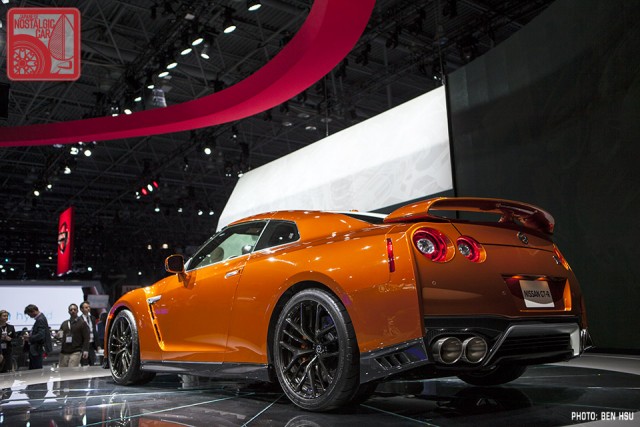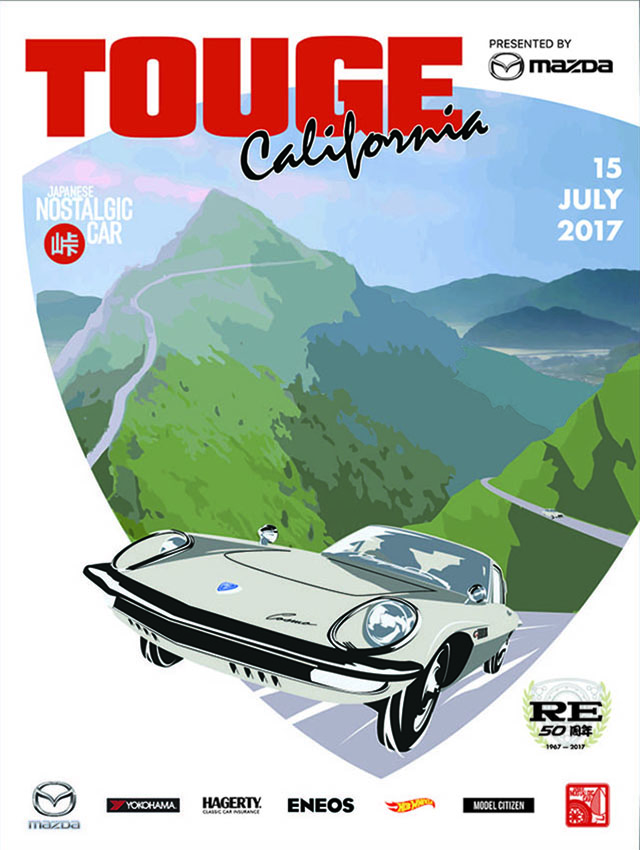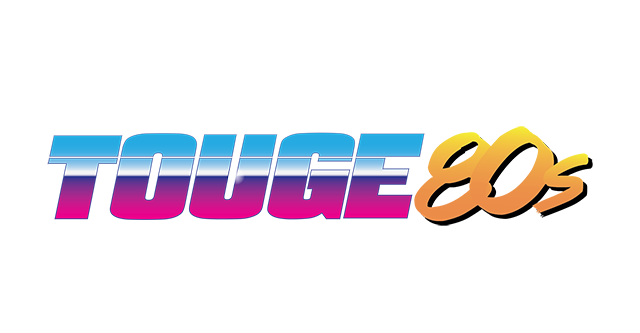Remember when Nissan and Honda’s merger talks fell apart earlier this year? Unsurprisingly the two companies are still talking, and as one senior Nissan exec revealed, one of the potential projects the two juggernauts could collaborate on is their respective flagships. In other words, the next-gen Nissan GT-R and Honda NSX could share a platform.
Speaking with The Drive, Nissan North America Senior Vice President and Chief Planning Officer Ponz Pandikuthira brought up, unprompted, that not only could the GT-R and NSX could be co-developed, but that it could be done without betraying the essence of each car. From the article:
“Can we do a next-generation NSX and GT-R off the same platform, make the NSX authentic to what it stands for and make a GT-R authentic to what it stands for? So they are not clones?” Pandikuthira asked rhetorically. “Can you co-develop two cars like that? I think we can.”
“The authenticity of this matters,” Pandikuthira continued. “An Acura NSX had a very different origin of what that car was. Super lightweight, all aluminum.” The VP described the supercars’ differences as the NSX being “super precise, lightweight, aerospace execution, whereas a GT-R is a brute, but a sophisticated brute.”
It’s an astounding disclosure. Imagine, the two greatest Japanese performance cars of the modern era with common DNA. To be honest, we’re not even certain they can really pull it off, even though Pandikuthira seems to understand what each car is about.
Each company has also roughly outlined what their next-gen supercars are going to be. Pandikuthira told The Drive that the R36 will have hybrid power, likely with a turbo V6, possibly shared with the mill of the Armada. This counters rumors of an all-electric Godzilla, and Pandikuthira explains why:
Basically it’s like it would complete one lap at the Nürburgring, and then you have to recharge the car. And then that charging is going to take you a while, and it’s just not authentic.”
“You just built a thing to check that box that you have a GT-R, but it’s not really a GT-R,” Pandikuthira said. “No, electric, I don’t think you’ll deliver with the technology that we have now, or even with solid state, the kind of performance that’s expected out of a GT-R.”
Meanwhile, Honda’s global executive vice president Shinji Aoyama has stated that the company is working on an all-electric NSX-type vehicle. Could two cars have enough in common using these two different powertrains to make the partnership viable, while keeping each car as pure and uncompromised as a halo car should be?
Pandikuthira estimates that the R36 Nissan GT-R could arrive in three to five years. Aoyama said the NSX-like vehicle would arrive in 2027 or 2028. We presume they mean the concept versions, not production-ready ones. Otherwise, there probably isn’t enough time for the companies to really co-develop. To be clear, Pandikuthira isn’t saying this is definitely happening, just that it could be done. A lot would still have to happen in the talks between Nissan and Honda for them to pull this off.
The first-gen NSX and the R32-R34 Skyline GT-Rs could not be more different. But, the R35 GT-R and NC1 NSX weren’t as far apart. Both were AWD and had turbocharged V6 engines. Perhaps by the time their successors roll around, the convergence won’t seem so strange after all.











It’s heartening that folks at the top are trying to keep the GTR true to it’s real being. I fear for where Honda will take the NSX though. Honda, at least in North America has, with the exception of the Civic Type R and the Integra Type S, become a purveyor of tepid, forgettable sedans and crossovers, Gone are the days when even their bottom of the range Civic was still a fun to drive alternative to the milquetoast offerings of Nissan and Toyota.
I was a decades long Honda fan, but now they have left me in the shadows. With the exception of the CTR and ITS there is nothing in Honda’s lineup in North America that I would even consider, and at their price point, I’m closed out of Honda ownership. I know someone will bring up the Civic SI, but I’m sorry, at 71 I will never be old enough for a four door sedan. Put the SI on the hatchback body and I would consider getting out of my BRZ for one, maybe.
I hope Honda can find it’s mojo again, but at this point I have serious doubts that they will regain it.
gone
Weird to think they would make two different halo cars on the same platform, I mean, one is a front engined, or front midship engined car, and the other is a rear midship engined car, the driver is located at very different places in these cars.
The idea of a lightweight third-ged NSX is absurd on its face.
It’s a great idea, not an absurd one, but will they actually come through with it?
… I think when I was wondering about how Honda is perceived in the same sense as Toyota and most Japanese carmakers in Europe, then to be honest that Honda is more of an old man’s car in European countries because the general public there dont’t mind nor appreciate them just as they don’t buy their cars (Honda, Nissan etc.) that much, in contrast to Renault (which has Nissan and Mitsubishi in it but also Dacia and Alpine) and PSA Peugeot Citroen / Fiat SpA (now doing business as Stellantis) which even has had models that are far from the mediocrity and unlovability of Hondas and Nissans. (On the other hand, Honda and all of Japan’s carmakers in Europe are even generally ignored by foreigners especially Americans who also spend time within European grounds, after all, Renault and Stellantis isn’t the only substitute to them, for the past decades Europe’s carmaking business has been dominated by one and that’s the Germans.)
In addition, I suspect that none of Renault and PSA / Fiat Group cars for ex. are matched to that of Honda and Nissan / Datsun, in that case, Honda no longer has its Swindon, England factory open for business while Nissan already closed its Barcelona, Spain plant in favor of leaving its Sunderland, England plant to be Europe’s sole Nissan manufacturing facility – Qashqai and Juke sales in Continental Europe are quite low and people there ignore two of these Nissan because its for the same reasons they opt instead for Renault Group and Stellantis vehicles. (Toyota, meanwhile, have found itself to be the only Japanese carmaker that have ever reached the top ten / top twelve in Europe’s automotive industry, especially with General Motors / GM no longer active there and Ford similarly decided to focus more on commercial vehicles means that Toyota have surpassed the two US carmakers to be the leading non-European car manufacturer in Europe, this is also because Toyota is currently the only Japanese carmaker to compete in both World Rally Championship, World Endurance Championship and Dakar at the same time while Honda has never been in WRC and Dakar except bikes and even Nissan is no longer in those Euro-centric motorsports series.j
In the face of Trump’s tarrifs, success of Republic of Korea’s cultural expansion overseas and calls for rest of Europe (partially France, Germany, UK, Belgium, Netherlands, Luxembourg, Denmark, Sweden, Finland, Norway and Iceland) to blacklist America as a result of Trump 47 for the same reasons South Korea have also tried hard to blacklist Japan, due to SK’s troubled memories with Japanese (1910-1945), therefore since North America is one of Honda and Nissan’s biggest markets (as well as Toyota and much of Japan’s automakers except Suzuki, Isuzu and Mitsubishi plus Daihatsu and Hino) then while an alliance / union between Toyota, Honda, Renault and Stellantis would have been expecting geomarketing exchanges (Toyota and Honda would benefit from Europe while Renault and Stellantis once again would look to Asia-Pacific) just as Toyota and Honda would trade their own technology in favor of remodeling their cars after Renaults (just like Nissan and Dacia are) mixed with that of Peugeot, having a next-generation NSX to share sides with GT-R and Supra and base them between Renault (Alpine) and Stellantis (Maserati and Alfa Romeo plus Ferrari since it had history with Fiat and Alfa) would be like how Stellantis’ other brand Chrysler (which sought a deal with Renault hence Jeep) continued business with Mitsubishi in exchange for both to develop sports cars sharing the same bits like 3000GT aka GTO / Dodge Stealth and Eagle Talon / Plymouth Laser / Mitsubishi Eclipse / Dodge Avenger (coupe only) – on the other hand Renault have even sought a partnership with Lotus to develop next-generation Alpines but since Lotus had history with Toyota and Stellantis (hence Talbot Sunbeam) therefore expecting a twinning of NSX, Supra and GT-R would have them modeled on Lotus’ sports cars instead. (As Lotus still carries the tradition of powering their products with Toyota powertrains, but in recent times, half of Lotus’ cars are planning to shoehorn them with Mercedes-Benz engines since latter even has one that’s co-developed with Renault.)
6-cylinder V6 mid-engine hybrid electric… is it possible to create a platform that can accommodate all these configuration variables so that no model loses its identity?